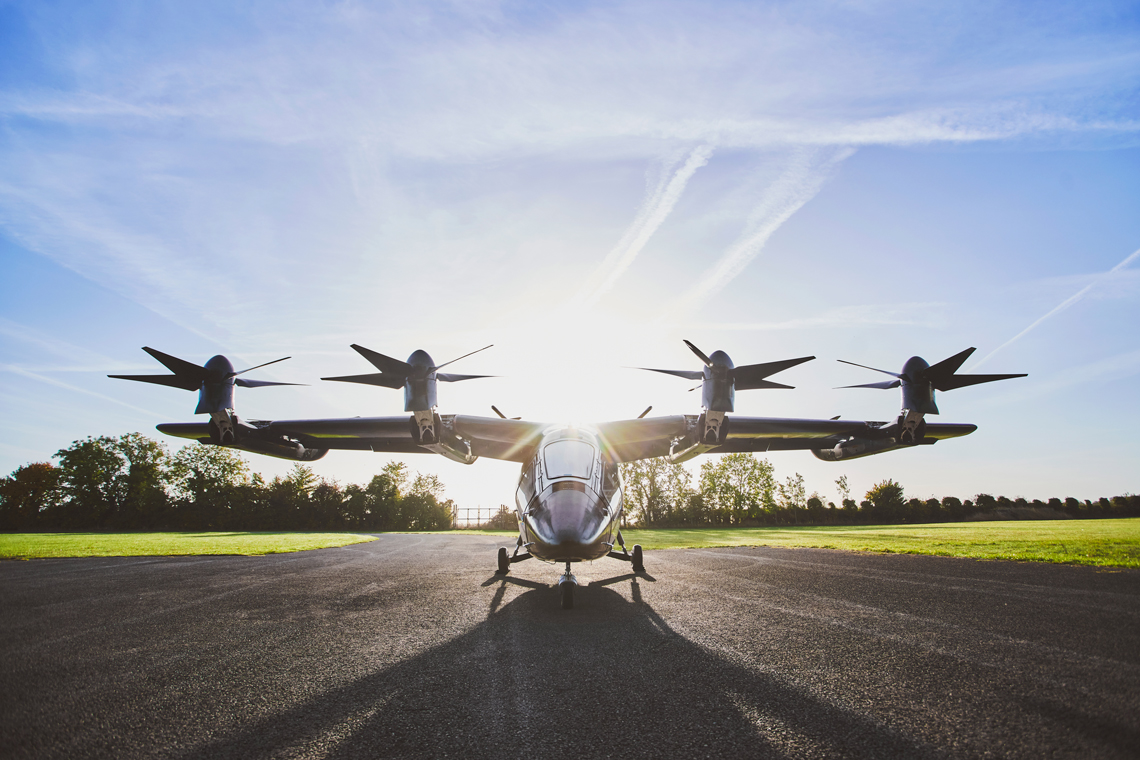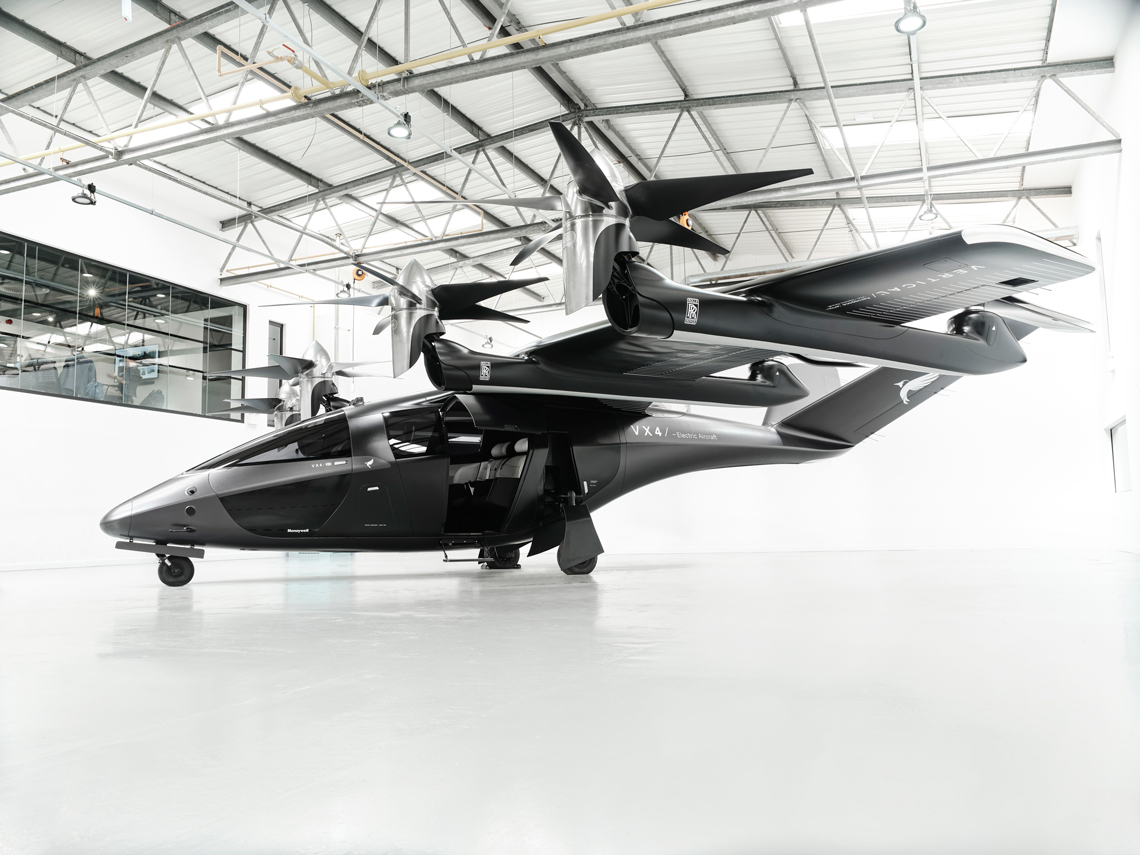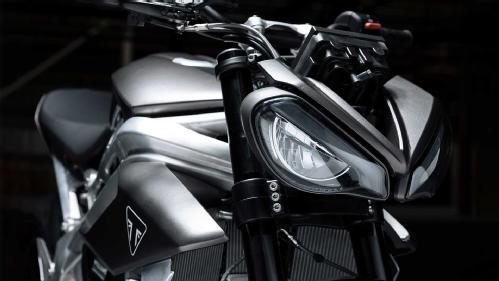Success Story Assetbank
WMG Announce Take Off for the New eVTOL Battery Diagnostic Algorithm
Background
The world is witnessing a paradigm shift in aviation, with electrified aircraft presenting a promising solution to reduce environmental impact through lower emissions of noise and pollutants. Within this transformative landscape, electric Vertical Take-Off and Landing (eVTOL) aircraft have emerged as one of the most innovative designs, offering quieter, safer, and low-cost possibilities for urban air mobility and sustainable transportation. However, the successful integration of eVTOL technology hinges on addressing critical concerns surrounding battery safety, a challenge that Warwick Manufacturing Group (WMG) took on with unparalleled determination and expertise.
Vertical Aerospace Ltd (VA) is a British technology aerospace that is pioneering electric aviation and was set up by entrepreneur Stephen Fitzpatrick in 2016. Based in Bristol, Vertical is working with world-leading suppliers and partners to decarbonise air travel using the best technologies from across the aviation, energy, and automotive industries with the aim to provide faster, quieter, greener, and smarter ways for people to travel around cities and regions.
As the eVTOL sector continues to gain momentum, lithium-ion batteries have become the primary choice for meeting the power and energy density demands of these aircraft. However, organisations express apprehension about battery safety, especially in the aerospace domain where the consequences of failure could be catastrophic.
Challenge
Vertical Aerospace are a pioneering and best in class management company with a technical team hand-picked from the aerospace and advanced automotive sectors and 300+ in-house engineers. The challenge for Vertical Aerospace for certifying batteries is that there was no battery diagnostic system capable of detecting potential faults in eVTOL battery packs before take-off.
With this challenge in mind, Vertical Aerospace approached WMG and set out to help fill this crucial gap in the industry. The diagnostic system was to be an innovative blend of cutting-edge electro-chemical methods, ensuring the seamless integration of advanced technology into aircraft systems.
In response to this pressing need, WMG embarked on a pioneering project to develop a revolutionary smart-diagnostic charge device for eVTOL aircraft batteries. This device aimed to enhance in-flight performance, safety, and, most importantly, enable fit-to-fly certification of the battery pack before every flight.

Image courtesy Vertical Aerospace
Solution
As part of a £2.3m project funded by ATI (Aerospace Technology Institute) through Innovate UK, a collaborative project was launched with VA. WMG's diagnostic algorithm demonstrated its capability to detect potential battery faults with unmatched accuracy. The algorithm capitalises on the battery data collected by the battery management system (BMS) during charging. The system underwent rigorous testing and validation using battery modules provided by VA. This crucial feature enabled VA to implement the diagnostic procedure for fit-to-fly certification of their battery packs before every flight, bolstering aviation safety and instilling confidence among passengers and industry stakeholders.
The device's exceptional performance and reliability not only met the project's objectives but also exceeded expectations, marking a remarkable milestone in aerospace technology.

Image courtesy Vertical Aerospace
“Battery systems including charge and diagnostics testing are well-known in academia and industry; having undergone years of development and research for the automotive market.
“An aerospace application provides a fantastic opportunity to utilise methods, designs, models, and algorithms that were not financially, volumetrically, or technically feasible before. Using these novel approaches, we plan to significantly improve the safety, range, and capability of our battery system.”
Limhi Somerville, Head of Energy Storage at Vertical Aerospace
Impact
The impact of WMG's eVTOL diagnostic technology reverberated far beyond the confines of the project. The successful outcome of this groundbreaking initiative opened doors to a broader consortium collaboration with AMEC, demonstrating the industry's recognition of WMG's ability and capabilities. AMEC (Advanced Mobility Ecosystem Consortium is aiming to demonstrate the commercial and operational viability of Advanced Aerial Mobility (AAM) in the UK, has been awarded a £9.5m grant by the UK Government’s Future Flight Challenge to develop the essential building blocks of a viable AAM ecosystem that has the potential to be progressed into full commercial operations. The algorithm for this is being further developed to extend its capability to work with new battery technologies.
Additionally, WMG's trailblazing work in aerospace electrification played a crucial role in securing funding for future projects like ZEST (Zero Emissions for Sustainable Transport). This has reaffirmed their position as pioneers in sustainable aviation research on battery safety evaluation through experimental research and creation of new models to prediction LIB failure modes appropriate to aerospace. It includes the use of novel in-cell instrumentation to measure failure and system level strategies to mitigate propagation.
The collaborative partnership with VA resulted in a mutually beneficial knowledge exchange. WMG shared invaluable expertise, code, and battery parameterisation insights with VA engineers, empowering the industrial partner with essential capabilities they lacked in-house. Furthermore, WMG provided unwavering support to VA in data factory generation, further enhancing their ability to optimise battery pack performance.
The smart charger will be used for Vertical's recently unveiled passenger model, VA-1X. Capable of carrying a pilot and four passengers for up to 100 miles at speeds of 150mph. They aim to certify in early 2026.
“The successful integration and management of battery systems within future electric aircraft represents a significant research challenge and one that WMG is excited to be working on in partnership with Vertical Aerospace.
“This project has allowed us to expand our capabilities in battery characterisation, battery system modelling and novel methods of fault diagnosis and prognosis. All within a sector that is strategically important for the UK as it move towards its zero emissions transport targets.”
Professor James Marco, University of Warwick
Notably, the development of the eVTOL diagnostic device revolutionised aerospace battery technology. The technology's uniqueness and pioneering nature can potentially increase battery pack usage in various aircraft and promote second-life applications. By extending battery life and repurposing used packs, the project aligns with sustainability goals, reducing the environmental impact associated with battery manufacturing.
Conclusion
WMG's commitment to innovation and excellence in aerospace technology has borne fruit through the development of the eVTOL diagnostic device. This project produced a prototype smart-diagnostic algorithm for the eVTOL aircraft battery. It will use innovative and cutting-edge electro-chemical methods and allow improved in-flight performance, safety, and assist in future certification of battery systems.
The prototype smart-diagnostic charge device is poised to redefine the future of eVTOL aircraft, enabling greener and safer flights, and paving the way for a sustainable aviation industry.
As the world continues to embrace electrified aviation, WMG's expertise stands ready to shape the future of aerospace technology. Their portfolio of success stories and invaluable contributions to the industry is a testament to their dedication for progress and sustainability. Companies and organisations in the aerospace sector can find a reliable partner in WMG, poised to propel them into a new era of innovation and success.
Find out how WMG can help you start your own success story in aerospace electrification. Contact us at wmgbusiness@warwick.ac.uk and embark on your journey towards innovation and sustainable aviation solutions.
Uni-WARP project supports companies in a shift to transport electrification
Transport is now the highest emitting sector of the UK economy, accounting for 22% of total green-house gas emissions. The Government has announced plans to make every mode of transport net zero emissions by 2050 and has set ambitious decarbonisation targets. Electric vehicles (EVs) are seeing a surge in demand, with sales of battery electric and plug-in hybrid vehicles accounting for over 13% of sales in January 2021 compared with 6% in 2020 (Society of Motor Manufacturers and Traders, SMMT). But market opportunities in other transport sectors, such as two-wheeled vehicles, aerospace and marine, are growing significantly.
Challenge
While automotive battery technology is relatively well established, other transport sectors are at an earlier stage in their electrification journey. This led to new partners from sectors such as aerospace and off-highway approaching WMG with questions like “what size of battery do I need?” and “what is its mass and volume?”
Engineers in our Energy Innovation Centre (EIC) set out to create a set of easy-to-use modelling tools to provide simple answers to these questions. These tools would support OEMs in non-automotive sectors to better understand battery capacity and sizing as well as analysing the cost-benefit ratio over the lifetime of a single vehicle or fleet.
The Uni-WARP project was funded by WMG Centre High Value Manufacturing (HVM) Catapult and aimed to create tools to help companies to make the right choices early, saving time and cost, ultimately enabling the shift to transport electrification.
Solution
Our team of technical experts created a unique database using real-world battery data compiled from over ten years’ of cell characterisation data from WMG’s own labs, as well as publicly available data on energy and power requirements for electric and hybrid vehicles.
Several models and tools were created to help businesses select the right approach to suit their needs, in terms of system architecture, configuration, cells, subsystems and control.
Two of the key tools of use to industry, trade bodies and Government agencies are:
- Ready reckoner: a high-level sizing tool for wheel-based, aircraft, rail, marine, off-highway and public service vehicles. It calculates the battery size, weight and cost to support decision making.
- Cost-Benefit Analysis (CBA) tool: uses high-level battery pack cost estimates to determine the potential costs and benefits over different timescales and for different technologies. The CBA tool provides a £/kgCO2 saved, and a payback period for the savings compared with a conventional product.
Impact
The tools have already been a critical enabler in electrification decisions for several businesses. In particular, the tools have received positive feedback from firms in the aerospace industry including operators and airports who are working with WMG to help them meet their sustainability targets
The Uni-WARP toolchain was utilised within the Innovate UK funded “Triumph TE-1” project, which aims to create an electric motorcycle technology demonstrator, in collaboration with Triumph Motorcycles Ltd, Williams Advanced Engineering, Integral Powertrain and WMG.
Uni-WARP formed the basis of a study investigating the CO2 savings, cost benefit, energy usage and vehicle payback period for electric motorcycles, for different user groups within the UK. Outputs from study are supporting Triumph with respect to their future product plans and business strategy. Defined CO2 savings and energy usage from this study are directly supporting a government strategy document for electric two wheeled vehicles.
Natalie Fern-Lyons, Special Engineering Programme Lead, Triumph Motorcycles Limited commented, “The battery sizing and cost-benefit analysis tools were a vital input in the Triumph TE-1 project. Understanding the CO2 and energy savings will help us develop a business case for Triumph’s future electric motorcycle offer.”
The tools generated through this project will continue to be used to underpin other collaborative projects across multiple sectors, as well as helping companies to enhance their understanding of battery technology. Further to this, we are supporting trade bodies such as the Aerospace Technology Institute (ATI) to understand the CO2 savings and energy usage in aerospace and aviation.

